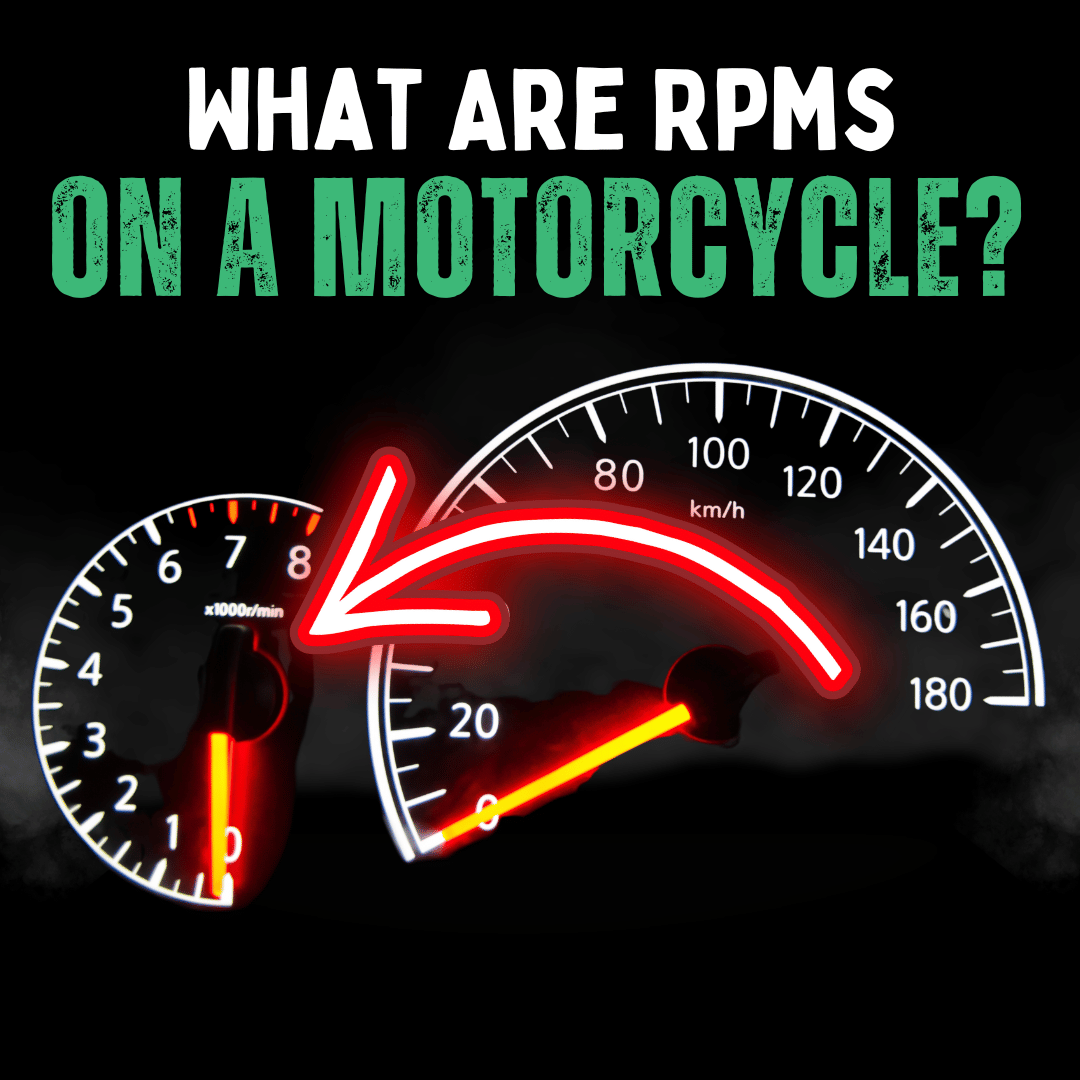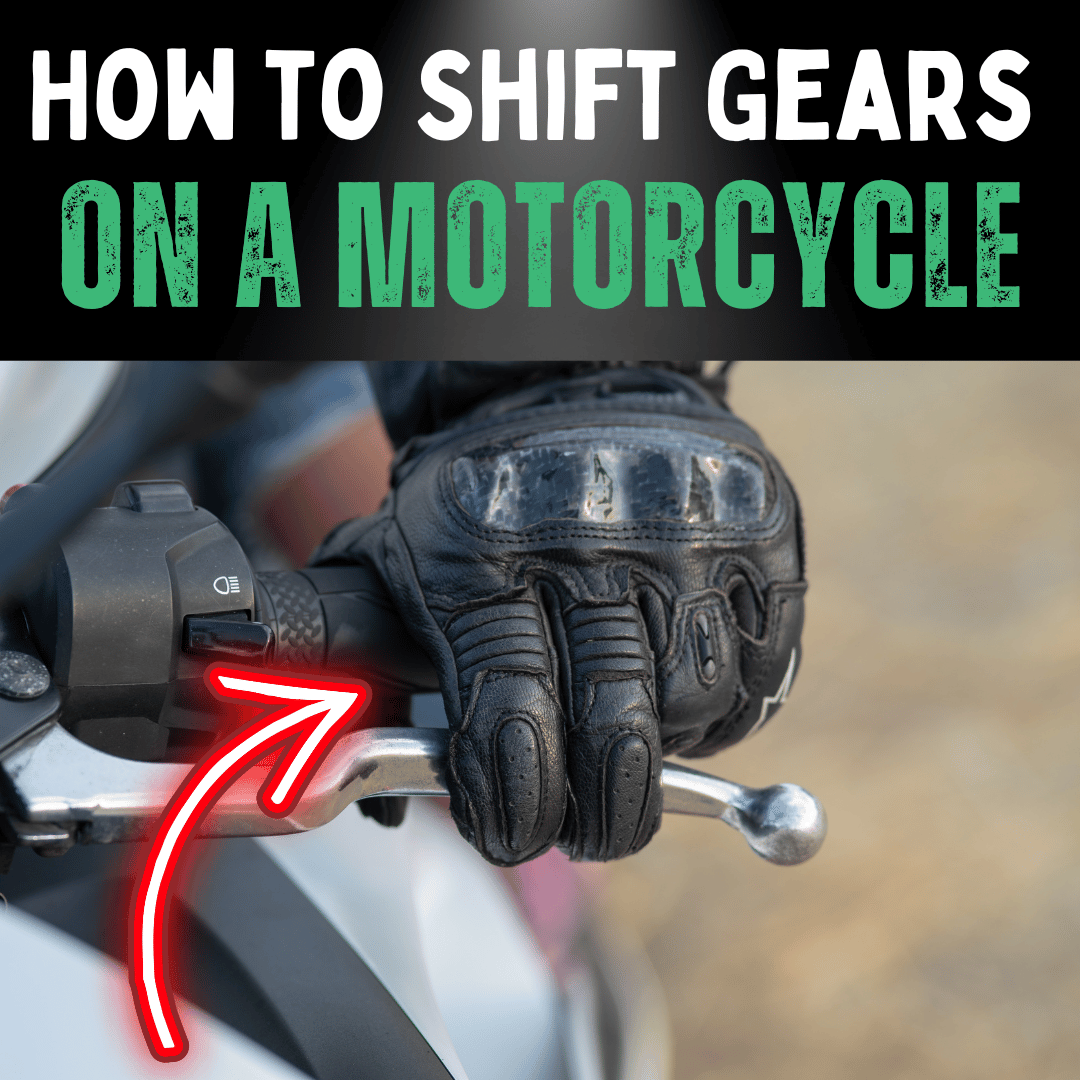
Published: 14.9.23
Updated: 22.8.24
You've finally taken the plunge and purchased your dream motorcycle.
Or perhaps you're still in the decision-making stage. Either way, you've heard about RPMs and know they're crucial, but you're not exactly sure why.
In this comprehensive guide, we're going to dive into what RPMs are and why understanding them can transform your motorbike experience.
By the end of this read, you'll know RPMs like the back of your hand, and how to use this knowledge to become a safer, more efficient rider.
Sound good?
Let's rev up and get started.
What Are Rpms On A Motorcycle?
RPMs, or Revolutions Per Minute, measure the speed at which a motorcycle's crankshaft rotates in the engine. This rotation speed influences both the bike's overall speed and its fuel consumption. The RPM is displayed on the motorcycle's tachometer, providing riders with insights into performance and efficiency.
What Does RPM Stand For?
RPM stands for "Revolutions Per Minute." Think of it as the heartbeat of your motorcycle's engine.
It's a measure of how many times the crankshaft in your engine rotates in a minute.
Why does this matter?
Well, it directly affects your speed and fuel consumption, among other things.
Why RPMs are Important

Understanding RPMs or Revolutions Per Minute isn't just an exercise for mechanics; it holds importance, significance, and relevance for anyone wishing to improve their bike's performance and fuel efficiency.
Similar to how RPM impacts car performance by affecting fuel consumption, higher RPMs on your motorbike or two-wheeler usually result in more speed but at the cost of increased fuel consumption.
In contrast, lower RPMs can give you better fuel economy or MPG, but you might sacrifice some power and engine performance.
Having a balanced understanding of RPM importance empowers you to optimise your riding experience, making you aware of engine health and when gear shifting would be ideal.
The Role of Engine in RPMs
The engine or more specifically the bike engine is the powerhouse of your motorcycle, and its rotational force is what produces RPMs or engine speed.
Engine RPM essentially measures how fast the car's engine operates at a given time.
When you manipulate the throttle, you adjust the crankshaft's rotational force, thereby affecting the RPM measurement shown on your tachometer.
This interaction between engine torque and RPM torque significantly impacts both fuel efficiency and bike power.
Maintenance for a Healthy Engine and Optimal RPMs
Maintaining your engine is like going for regular check-ups. An engine in good health will produce RPMs efficiently.
Regular oil changes, air filter checks, and keeping an eye on the engine coolant can go a long way.
The end goal is to keep those RPMs in the optimal range for top-notch performance.
Related: How To Measure Rpm On Your Motorcycle
Instrumentation: Tachometer and Speedometer
Tachometer
The tachometer is a critical piece of electronic instrumentation used to motorcycle user to keep the machine reliability.
It serves as a tool for RPM control and offers real-time RPM measurement of how fast your bike engine RPM is rotating.
This gauge is indispensable for bike maintenance and informs you when you should perform engine maintenance for optimal engine health and RPM transmission.
Speedometer
The speedometer is an instrument on a vehicle's dashboard that indicates its speed, complementing the tachometer in providing comprehensive data on your motorcycle's performance.
While the speedometer specifically reveals your bike speed, a higher RPM effect generally corresponds to a more significant speed impact.
This relationship is influenced by several factors, including the gearbox, torque production, and the gear you're currently in.
Therefore, monitoring both engine power and speed through these essential instruments is crucial for understanding the RPM impact on your two-wheeler's performance.
Related: How to Shift Gears on a Motorcycle (THE RIGHT WAY)
Gearing and RPMs
Gearbox
Imagine your gearbox as a DJ, mixing the beats (RPMs) and tunes (speed) to get the crowd (you, the rider) going.
The gearbox takes the raw energy produced by the engine and channels it into usable power sent to your wheels.
The gear you choose directly affects your RPMs and thus, your speed.
Drivetrain
The drivetrain is the unsung hero that makes sure the party keeps going.
Working in harmony with the gearbox, it ensures the engine's power gets to the wheels efficiently.
If your drivetrain's in good shape, you'll notice it in the smoothness of your RPMs.
Throttle Control
Think of the throttle as the volume knob on your music player. Turn it up, and the RPMs rise, increasing your speed.
Turn it down, and everything mellows. Mastering throttle control is like mastering the art of DJing; you've got to know when to turn up the energy and when to cool things down.
Effects of Different RPM Levels
RPM levels are a bit like the different gears on a bicycle. High RPMs will give you more speed but expect your bike to vibrate like a nightclub's bass speaker.
Medium RPMs?
That's your cruising zone for a smooth ride. Low RPMs are the equivalent of a chill-out room where you can enjoy better fuel efficiency.
Ideal RPM Range

Between 3000-8000 RPMs is usually the sweet spot.
Why?
Because riding within this range provides a balanced experience.
You get a smooth, comfortable ride and efficient fuel consumption, making your motorcycle journey as seamless as possible.
Maintenance for Optimal RPMs
You wouldn't go years without servicing your car, would you? The same applies to your bike.
Regular maintenance, including oil changes, tyre checks, and drivetrain inspections, will ensure that you're getting the most efficient RPMs and, by extension, an optimal riding experience.
Common Misconceptions About RPMs
You might have heard or read conflicting opinions about RPMs, so let's clear the air.
One popular myth is that higher RPMs are always bad for your bike.
That's not strictly true; high RPMs aren't inherently harmful if your bike is in good shape and the RPM level is within the engine's designed range.
Another misconception is that you should always aim for the lowest RPMs for the sake of fuel efficiency.
While lower RPMs generally lead to better fuel economy, they don't offer the best performance or responsiveness in certain situations.
So it's essential to find the right balance based on your riding needs.
How RPMs Affect Fuel Efficiency

It's no secret that RPMs and fuel consumption are directly connected.
Generally, the higher the RPMs, the more fuel you're burning. Think about it like jogging versus sprinting.
Jogging (low RPMs) conserves energy while sprinting (high RPMs) uses up a lot of energy quickly.
If you're looking for maximum fuel efficiency, then it's wise to operate in a medium to low RPM range whenever possible.
However, remember that it's not just about fuel; operating at very low RPMs for an extended time can stress the engine, affecting its longevity.
Safety Considerations at Different RPM Levels

Now, let's talk safety. Operating at very high RPMs for an extended period can lead to engine overheating, not to mention the vibration issues that might distract you while riding.
On the flip side, consistently running your bike at low RPMs can lead to 'engine lugging.'
This happens when the engine is under a lot of stress, making it work harder than it should, which is neither safe nor healthy for your bike.
Keeping an eye on the tachometer and ensuring you're in the right RPM range can go a long way in ensuring both your safety and that of your motorcycle.
Conclusion
So there you have it, a comprehensive guide to RPMs, or Revolutions Per Minute, on a motorcycle.
Remember, these aren't just numbers on your tachometer; they represent the speed at which the crankshaft in your engine is rotating.
This rotational speed is crucial for determining both the power delivered to your rear wheels through the gearbox and your bike's fuel consumption.
Being mindful of your RPMs is key to becoming a more proficient and informed rider.
Now that you understand the significance of RPMs, why not take to the open road and put that newfound knowledge to good use?
FAQs
How Do I Interpret the Colour Bands on a Motorcycle Tachometer?
Motorcycle tachometers often feature colour bands, which serve as visual guides to help riders interpret RPM levels. The green zone indicates the optimal RPM range for regular riding and fuel efficiency. The yellow zone suggests caution, as you're pushing the engine closer to its limits. The red zone, commonly known as the redline, warns riders that they are at the maximum RPM and risk damaging the engine.
What Happens If I Constantly Ride at High RPMs?
Continuously riding at high RPMs will lead to reduced fuel efficiency, meaning you'll get fewer miles per gallon. Additionally, sustaining high RPMs for extended periods can accelerate wear and tear on your engine.
Is There an Ideal RPM Range for Fuel Efficiency?
Yes, each engine has an RPM "sweet spot" where it operates most efficiently in terms of fuel consumption. For most standard SI automobile engines, this range is typically between 2500 and 3500 RPM.
How Can I Use RPMs to Perfect My Gear Shifting?
If you're struggling with gear shifting, try lightly tapping the accelerator when you're in neutral. Rev the engine to approximately 3000 RPM and then shift to a lower gear. Allow the RPM to drop gradually so that the engine speed matches the transmission speed.
Get in Touch 🚀
Loved our article on “What Are Rpms On A Motorcycle?" Got the itch to dive into more wheely-awesome info?
Whether you're a parent or a grandparent, we're here for all your kids ride-on toy questions! 🚗💨
Feeling click-happy?
Jump straight into our wonderland at RiiRoo.com.
Or, if you're more the chatty type, give our Live Chat a whirl and let's talk toys!







Share:
10 Ways To Avoid Your Motorcycle Clutch From Burning Out
What Motorbike Can I Ride On A Car Licence?